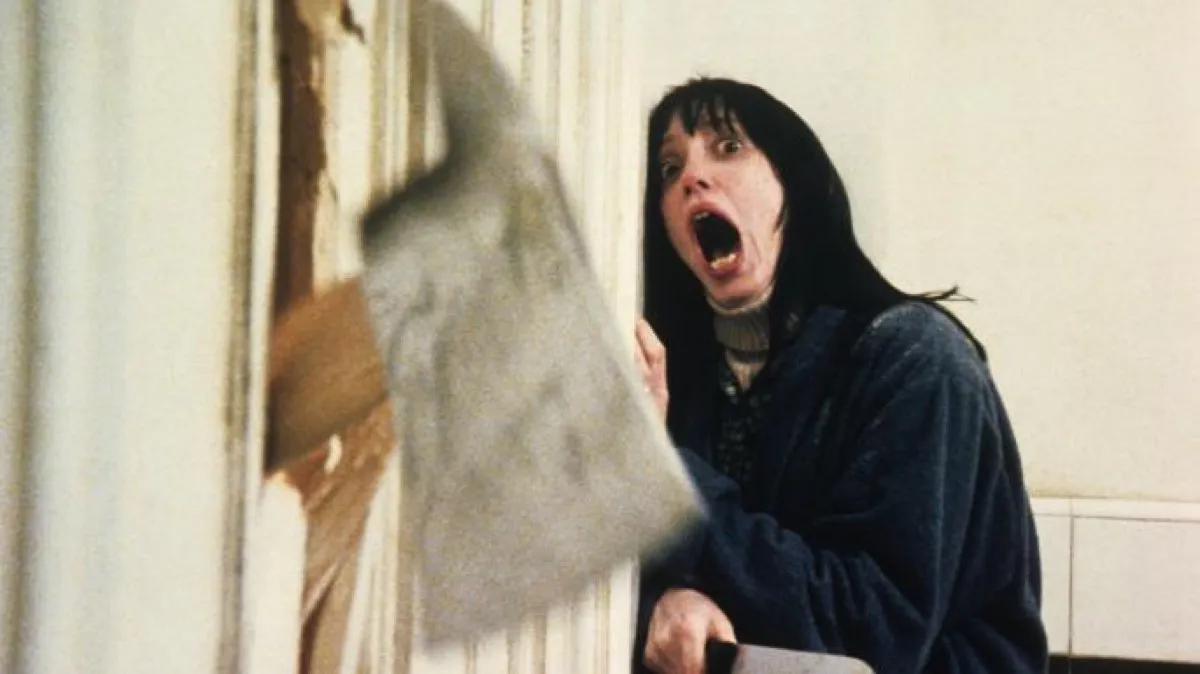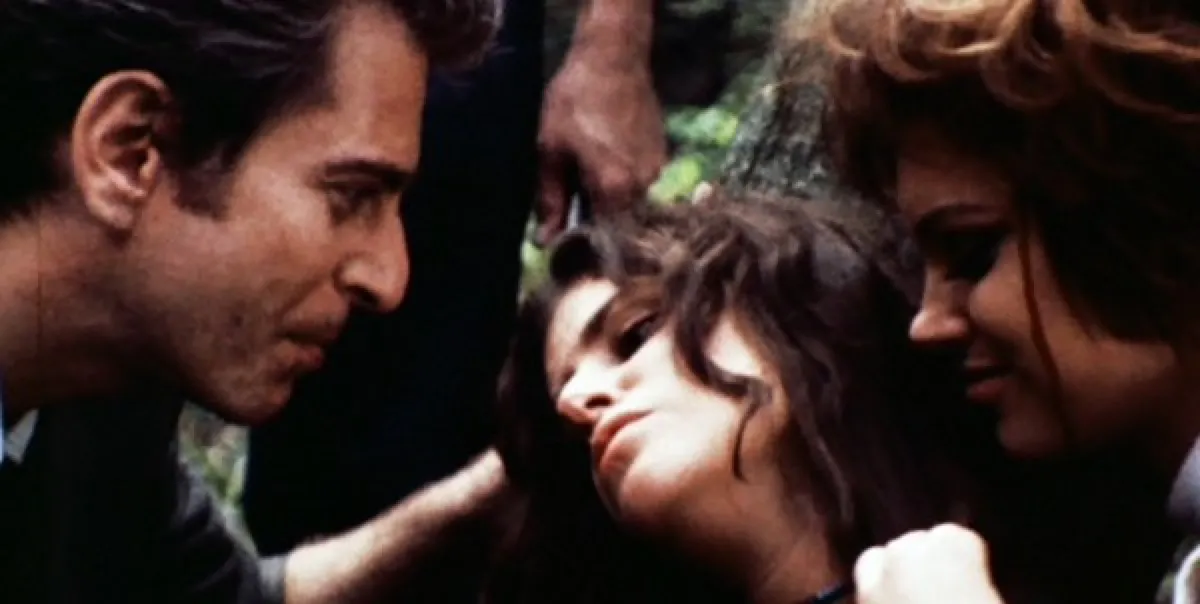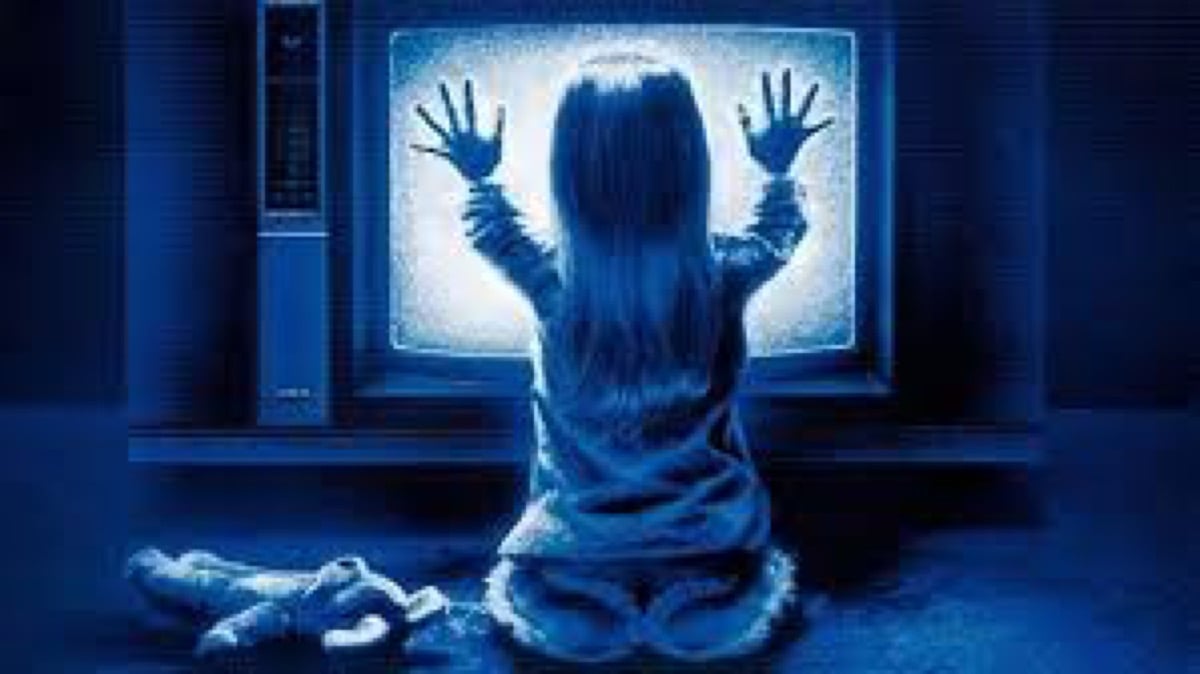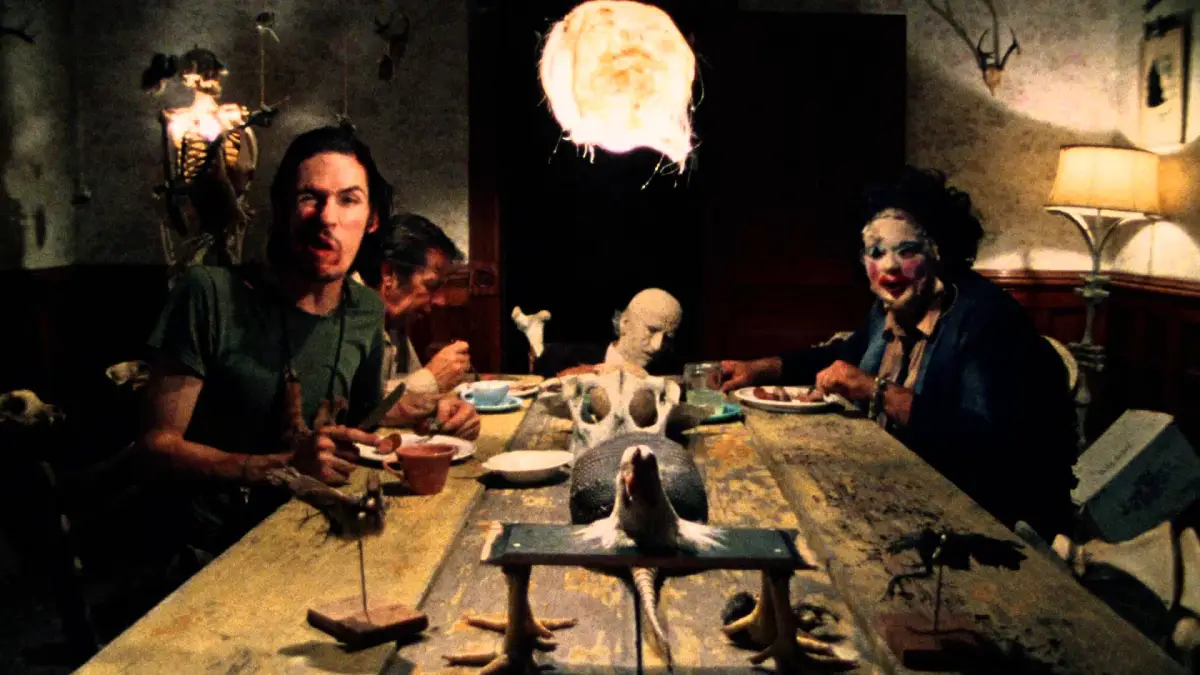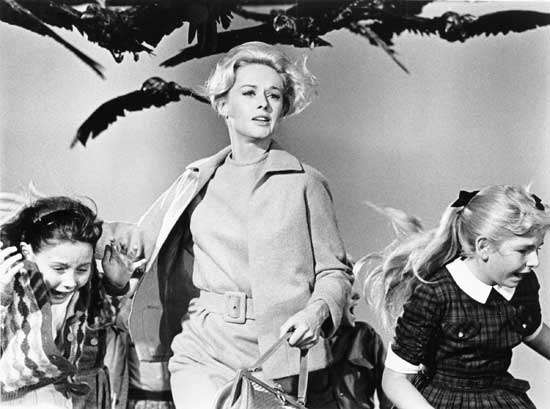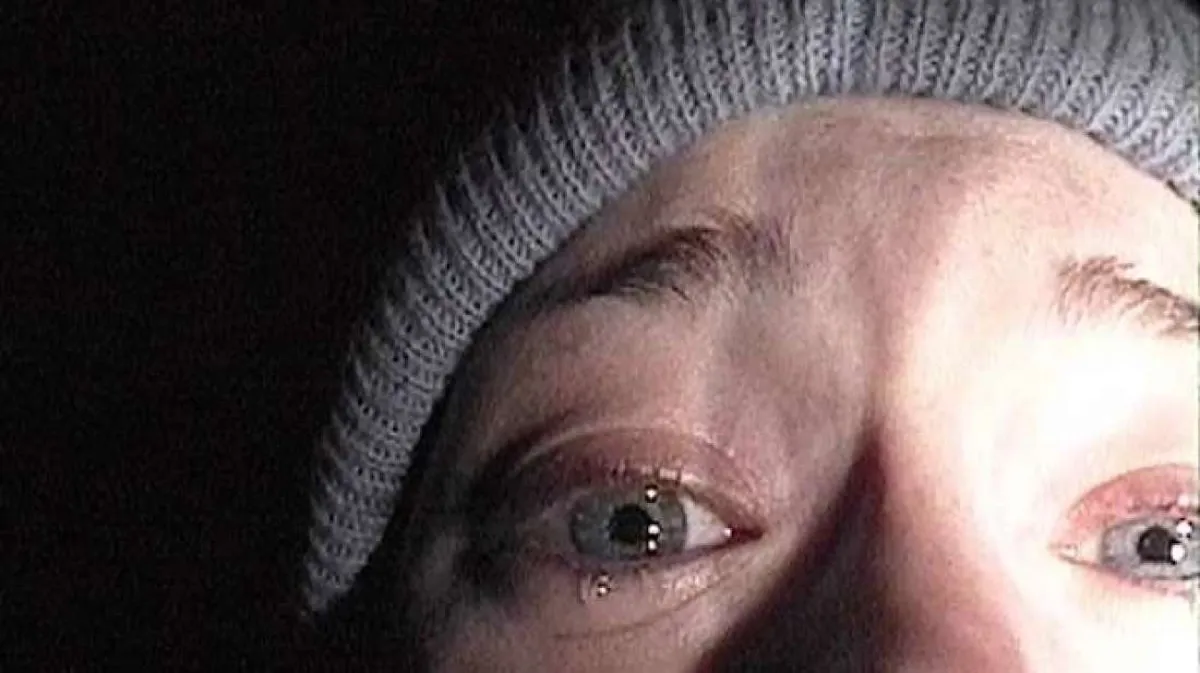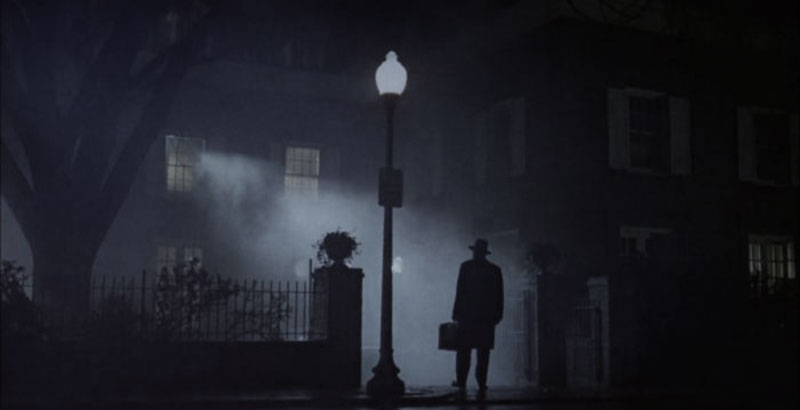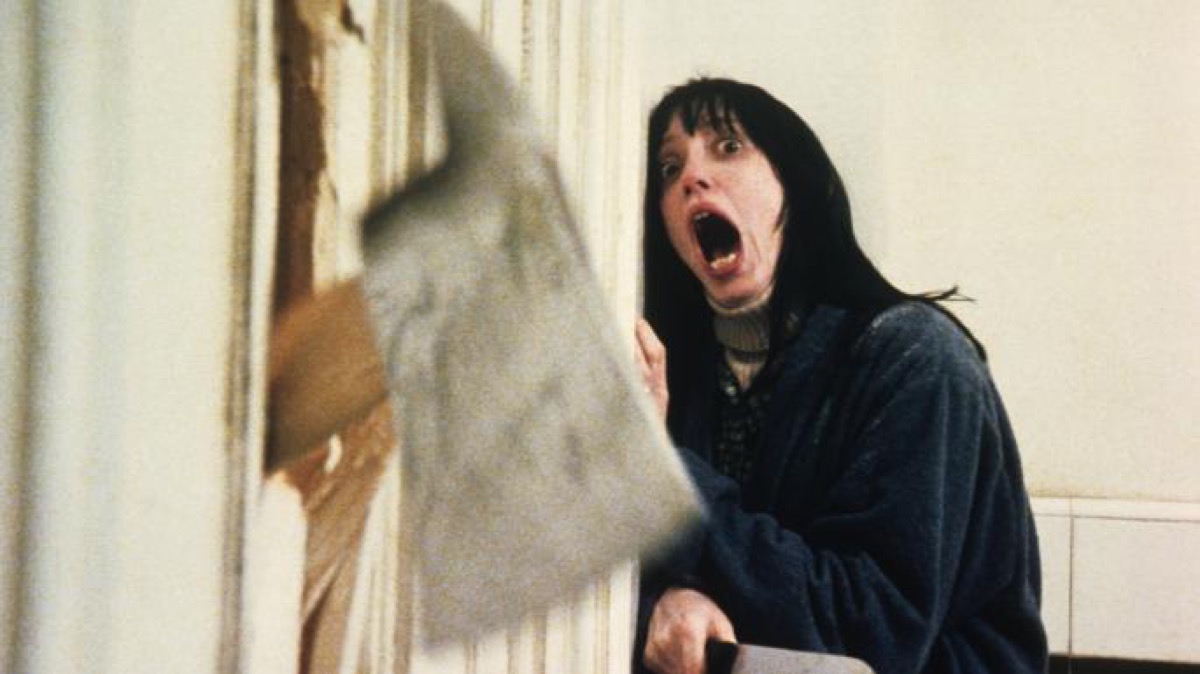Ever since I watched Heather O’Rourke get sucked into the TV in Poltergeist, I’ve always wondered about child actors in horror movies. As a perpetual scaredy cat growing up, I struggled to see how the hell these kids coped on-set. Did they understand what was really going on around them? Did the grown-ups sugar-coat it to retain their innocence?
As a (sort-of) adult, I now love horror movies, but it took until I was in my 20s, working as an entertainment journalist, to realize that making a horror movie isn’t any easier for adults—particularly if you’re a woman.
Sure, there’s plenty of tales of men in Hollywood who suffered from some sort of mental anguish after filming an intense role, such as Leonardo DiCaprio in The Revenant, or Christian Bale in The Machinist. Still, there’s a difference between method acting to the extreme and being forced into disturbing situations against your will, something that horror actresses know all too well.
For many actresses who are traumatized on-set, it’s not about the script. In recent years, a new light has been shone on historic tales of actresses abused on-set, from Maria Schneider and the nonconsensual “butter rape scene” in Last Tango in Paris, to Jean-Luc Godard’s abuse of wife Anna Karina in Pierrot Le Fou. (Don’t even get me started on poor Judy Garland.)
And if the #MeToo movement is anything to go by, these tales aren’t just confined to the past. A recent example of this is The Predator. Olivia Munn recently shared how she found herself isolated after successfully requesting a scene be removed from the sci-fi thriller, in which she’d unknowingly starred opposite a registered sex offender. On the press tour for the movie, Munn was vocal regarding the lack of support she received from the rest of the cast and filmmaker Shane Black. (Black says he and the other actors have since reached out to Munn to apologize.)
Sophie is a cute feminist butterfly navigating the world one kitty meme at a time, or at least that’s how her best friend described her when she asked for help writing this bio. She likes cheese and Buffy the Vampire Slayer, and she one day hopes to be the proud owner of a corgi. You can find more of her work at Screen Rant, The Untitled Magazine, and Bolde.
Of course, this bad behavior isn’t just restricted to horror films—Last Tango is an erotic drama, and Pierrot Le Fou is new wave cinema—but scary movies do seem to bring out the worst in directors (and in some cases, the crew). Here’s a few examples of scream queens who were not traumatized by their movie monster costars, but the human beings behind the camera.
Sandra Peabody, The Last House on the Left
As well as being the part that would launch her career, Sandra Peabody’s role in Wes Craven’s 1972 exploitation flick The Last House on the Left would also be her most traumatising. The 24-year-old actress starred as Mari Collingwood in the rape and revenge thriller, which would go on to cement her status as a true scream queen. Although her character had a rough time onscreen, the behind-the-scenes torment Peabody suffered at the hands of her costars would prove to be the worst part of taking on the role.
On the movie’s home release commentary, actor Marc Sheffler—who played murderous thug Junior—described threatening Peabody in an attempt to improve her acting abilities: “She wasn’t getting the scene. She wasn’t at the anxiety level that she needed to be. So, we’d done it I don’t know how many times … everybody was getting annoyed. So, I said to Wes, ‘Give me a minute with her.’ What I did was—you can’t see it in the shot—but I took her over to the cliff, and I put her over the cliff and just grabbed her and said, ‘If you don’t get this f***ing scene right now, I’m going to drop you … and Wes’ll shoot it, and we’ll get a different scene, but it’ll work because you’ll be f***ing mangled.'”
If that wasn’t horrifying enough, David Hess—who starred as fellow gang member Krug Stillo—was also in on it, threatening to assault Peabody to get a reaction from her. However, he got his comeuppance. That chase scene towards the end of the movie involved a real chainsaw and absolutely no on-set safety precautions (it was the 1970s, after all).
JoBeth Williams, Poltergeist
Practically everyone has heard of the Poltergeist Curse. Stephen Spielberg’s 1982 horror classic has gone down in history not only for its spooky subject matter, but also for the many bizarre occurrences that took place during production. This includes Oliver Robins’ (Robbie Freeling) near-death experience with that clown puppet, as well as rumors of an on-set exorcism and the untimely deaths of stars Heather O’Rourke and Dominique Dunne (Carol Anne and Dana Freeling). Google the so-called curse, and trust me, you’ll fall into a Wikipedia hole that won’t be easy to claw your way out of.
So, it’s not surprising that JoBeth Williams, who played Freeling family matriarch Diane, came away from filming with a few issues. This was mainly because Spielberg insisted on using real human skeletons in the movie, as they were cheaper than the plastic kind (although Williams’ claim has never been confirmed). Meaning yes, the actress was literally dumped in a pool full of corpses. Not cool, Steve.
Marilyn Burns, The Texas Chainsaw Massacre
Director Tobe Hooper has a reputation for being difficult to work with, mainly because he seems to get a kick out of torturing his actors. The man behind the original Texas Chain Saw Massacre, Hooper refused to let the cast see actor Gunner Hansen, a.k.a. Leatherface, in costume until filming began, with the intention of capturing their real reactions. The late Hansen told Esquire that the famous dinner table scene towards the end of the movie was particularly traumatic for both himself and Final Girl Marilyn Burns.
“The whole dinner scene is burned in my memory, I think just because of the misery of it,” he said. “At that point we were really just on the verge of mental collapse. And Marilyn told me about how awful it was for her, because she was terrified … Just being tied to a chair and then having these men looming over her constantly, she said it was really unnerving.”
It probably didn’t help that the actress was repeatedly hit in the head with a sledgehammer during the scene (it was covered in foam and rubber, but it still can’t have been pleasant), followed by her finger being cut open for real.
Apparently, Burns later told Hansen, “I thought you were really going to hurt me. You couldn’t see through your stupid mask.”
Tippi Hedron, The Birds
The disturbing way Alfred Hitchcock treated Tippi Hedron is now well-known, with the director not only abusing her during the filming of Marnie and The Birds, but eventually going on to ruin her budding career.
Hedron was an unknown model starring in commercials when Hitchcock plucked her from obscurity, but it wasn’t long before he developed a crazed obsession with the soon-to-be star, making her life a nightmare on- and off-set after she rebuffed his advances. His lengthy harassment ranged from crude sexual comments on-set, to attempting to control her whole life outside of the studio. He had her handwriting analyzed and made sure she was followed, with his stalking eventually culminating in sexual assault.
While filming The Birds, Hitchcock tricked Hedron into a scene with live birds, which left her physically injured and emotionally wrecked. Apparently, Hitchcock had told Hedron she’d be working with mechanical birds, only to inform her on the day that “they were broken.”
In an interview, the actress recalledT “there were boxes of ravens, gulls and pigeons that bird trainers wearing gauntlets up to their shoulders hurled at me, one after the other, for a week.” Left bloodied and exhausted, Hedron eventually collapsed and was taken from the set to a doctor. She still believes the scene was punishment for turning the director down.
Hedron wouldn’t let Hitchcock win, but did eventually leave Hollywood to escape him. “I had to get out of there,” she said. “I was dealing with one of the most powerful men in motion pictures and it was difficult, embarrassing and insulting. He said, ‘If you leave, I’ll ruin your career.’ And he did.”
Heather Donahue, The Blair Witch Project
By today’s standards, The Blair Witch Project is rather tame, but when it was released in 1999, the independent film became a massive sleeper hit, mostly due to clever marketing. Credited with popularizing the “found-footage” style, promotional materials listed the stars Heather Donahue, Michael C. Williams, and Joshua Leonard as either “missing” or “dead,” which had a surprising emotional impact on Donahue.
In an article for The Guardian, she wrote, “My obituary was published when I was 24. It’s a complicated thing to be dead when you’re still very much alive and eager to make a name for yourself.”
During filming, the cast were sent to the woods without really knowing what the filmmakers had in store for them. Once there, they were forced into a state of constant anxiety. To make the actors’ reactions more believable, interaction between the cast and crew was severely limited. Directors would sneak up and shake their tents during the night, as well as keep their food intake to a minimum to make them hangry.
Unsurprisingly, the cast turned on each other, which resulted in one particularly tense scene. In a piece about the making of the film, Leonard said, “At the time, I felt bad about my final attack on Heather – when I turn the camera on her and yell at her about what her motivation is. It was me, expressing frustration as both a character and an actor, but it worked on another level: the idea of us all as performers.”
Ellen Burstyn, The Exorcist
Many film fans already know that Linda Blair, the actress who played possessed teen Regan in The Exorcist, suffered with emotional issues for years after the film was released. However, lesser known is that director William Freidkin broke the back of Ellen Burstyn—the actress who played Regan’s mother, Chris McNeil—during filming by ignoring safety procedures, causing her years of chronic pain.
For the scene where demon-child Regan attacks her mother, knocking her to the floor, Burstyn was pulled to the ground by a wire thread through the wall and tied around her waist. After the force of the first take scared her, Burstyn asked Freidkin if the stuntman could not pull the wire so hard, as she was concerned about getting injured. However, Freidkin apparently ignored her request. In the next shot, the stuntman pulled on the wire too hard, pulling Burstyn to the floor so violently that her spine was left permanently damaged.
Burstyn told HuffPost in 2017 that she believes Friedkin didn’t mean to hurt her, but she’s had to work with an injured back ever since. She said, “Billy is one of those directors that is so dedicated to getting the shot right that I think some other considerations sort of fall by the wayside sometimes.”
Shelley Duvall, The Shining
Perhaps the most famous example of a director tormenting an actress in the name of art, Shelley Duvall’s mental and physical torture behind the scenes of The Shining is well documented. Although it was Stanley Kubrick who insisted on casting Duvall—Jack Nicholson had wanted American Horror Story’s Jessica Lange to play the role—the director put the actress through hell on set for over a year.
Nicholson and Kubrick had somewhat of a bromance, but even the actor said Kubrick was “a different director” with Duvall. As well as cutting many of her lines, he forced her to do the iconic baseball bat scene 127 times—the most takes ever for one scene, according to the Guinness Book of Records. It’s no surprise that the puffy eyes and red nose in the final cut are the result of real tears, and by the time the scene was finished, her hands were shaking and chunks of her hair were falling out from stress.
In the book The Complete Kubrick, Duvall describes the experience as “the most difficult role I’ve ever had to play.” She says, “From May until October I was really in and out of ill health because the stress of the role was so great. Stanley pushed me and prodded me further than I’ve ever been pushed before.”
The behind-the-scenes documentary The Making of the Shining, shot by Kubrick’s then-19-year-old daughter, Vivian, shows just how severe Kubrick’s bullying of Duvall really was. He was highly critical of her acting, constantly telling her that she was “wasting everybody’s time” and that her input was worthless. He also ensured that the actress received no sympathy from anyone on-set, asking crew to ignore her, thus isolating her further.
Finally, Kubrick kept Duvall in the dark regarding various traumatic scenes, such as the famous door scene, with her panicked screams supposedly those of true fright. It’s no surprise that Duvall’s time on The Shining allegedly put her off acting altogether, with the actress now living as somewhat of a recluse in a small town in Texas.
(featured image: Warner Bros.)
Sophie is a cute feminist butterfly navigating the world one kitty meme at a time, or at least that’s how her best friend described her when she asked for help writing this bio. She likes cheese and Buffy the Vampire Slayer, and she one day hopes to be the proud owner of a corgi. You can find more of her work at Screen Rant, The Untitled Magazine, and Bolde.
Want more stories like this? Become a subscriber and support the site!
—The Mary Sue has a strict comment policy that forbids, but is not limited to, personal insults toward anyone, hate speech, and trolling.—



